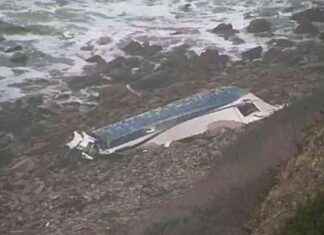More than four months after the re-election of Félix Tshisekedi as president and a month after the appointment of a prime minister, the new government is awaited in the Democratic Republic of Congo (DRC), against the backdrop of a serious security crisis in the East .
These delays are not exceptional in the vast country with complex regional balances, accustomed to endless political haggling. But, given “the very clear majority” of Félix Tshisekedi and the “emergencies” to be managed, “we could have expected more speed”, note for Agence France-Presse (AFP) Christian Moleka, coordinator of the Dynamics of Political Scientists (Dypol) of the DRC.
“The exit from the government is a moment of sharing the cake, certainly the politicians manage to avoid frustration,” comments, for his part, Brandon, a 33-year-old civil servant, met Thursday, May 2 in the morning on the on his way to work in Kinshasa. “Unfortunately, this is done without taking into account the population,” judges the young man.
Félix Tshisekedi, in power since January 2019, was re-elected in the first round of the presidential election, on December 20, 2023, with more than 73% of the votes, and the parties of his “Sacred Union” won some 90% of the seats in national deputies in the legislative elections organized on the same day.
“Nebula”
Officially inaugurated for a new five-year mandate on January 20, the president received a month later, on February 21, the resignation of his Prime Minister, Sama Lukonde, in office since 2021, and tasked the outgoing team with dispatching the Current affairs.
On April 1, the Minister of Planning, Judith Suminwa Tuluka, was appointed Prime Minister, the first woman to hold this position in the DRC. Since then and after having been duly congratulated by all the forces of the country, she consults.
At the same time, other consultations took place in Parliament and continued, including within the Sacred Union which had to organize primaries to choose its candidate for president of the National Assembly from three men. Indeed, while having an overwhelming majority, the Sacred Union “is a nebula, without a clear pivot”, deciphers political scientist Christian Moleka. Félix Tshisekedi’s party, the Union for Democracy and Social Progress (UDPS), certainly has around a hundred seats, but “the rest is broken up into small groups, and we have to negotiate the quota for each of them,” continues -he. There are more than 900 political parties in Congo. »
Ultimately, Vital Kamerhe, Minister of Economy in the Lukonde government, was chosen on April 23 as the majority candidate for the “perch,” a position he previously held from 2006 to 2009 under the regime of President Joseph Kabila . His election is no more than a formality. But this as well as the composition of the final office of the National Assembly are dragging, while the long electoral cycle initiated at the end of last year continued this week, with the indirect election of senators and provincial governors .
“Autopilot mode”
Technically, the government could be formed before the Assembly office, but the Prime Minister would then have to wait to be able to present her program to parliamentarians and obtain a vote of confidence. In the meantime, “the outgoing government cannot do much, the country is in autopilot mode,” notes Christian Moleka.
For his second term, President Tshisekedi has broken down his program into six priorities: job creation, increase in purchasing power, diversification of the economy which is very dependent on the mining sector, access to basic services, modernization of the country and, crucial point, security.
Eastern DRC has been plagued by violence from numerous armed groups for thirty years and is experiencing a peak of crisis with the resurgence, at the end of 2021, of the March 23 Movement (M23) rebellion. Supported by neighboring Rwanda, these rebels occupy large swaths of territory in the province of North Kivu and continue to advance. This week they notably seized the mining town of Rubaya, from which various strategic minerals including coltan are extracted.





